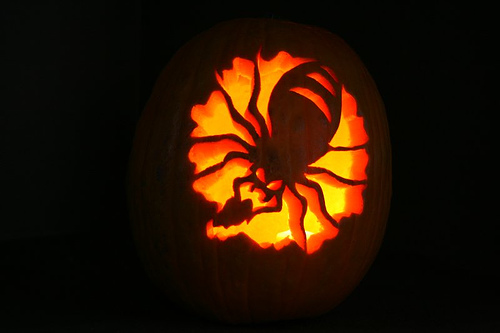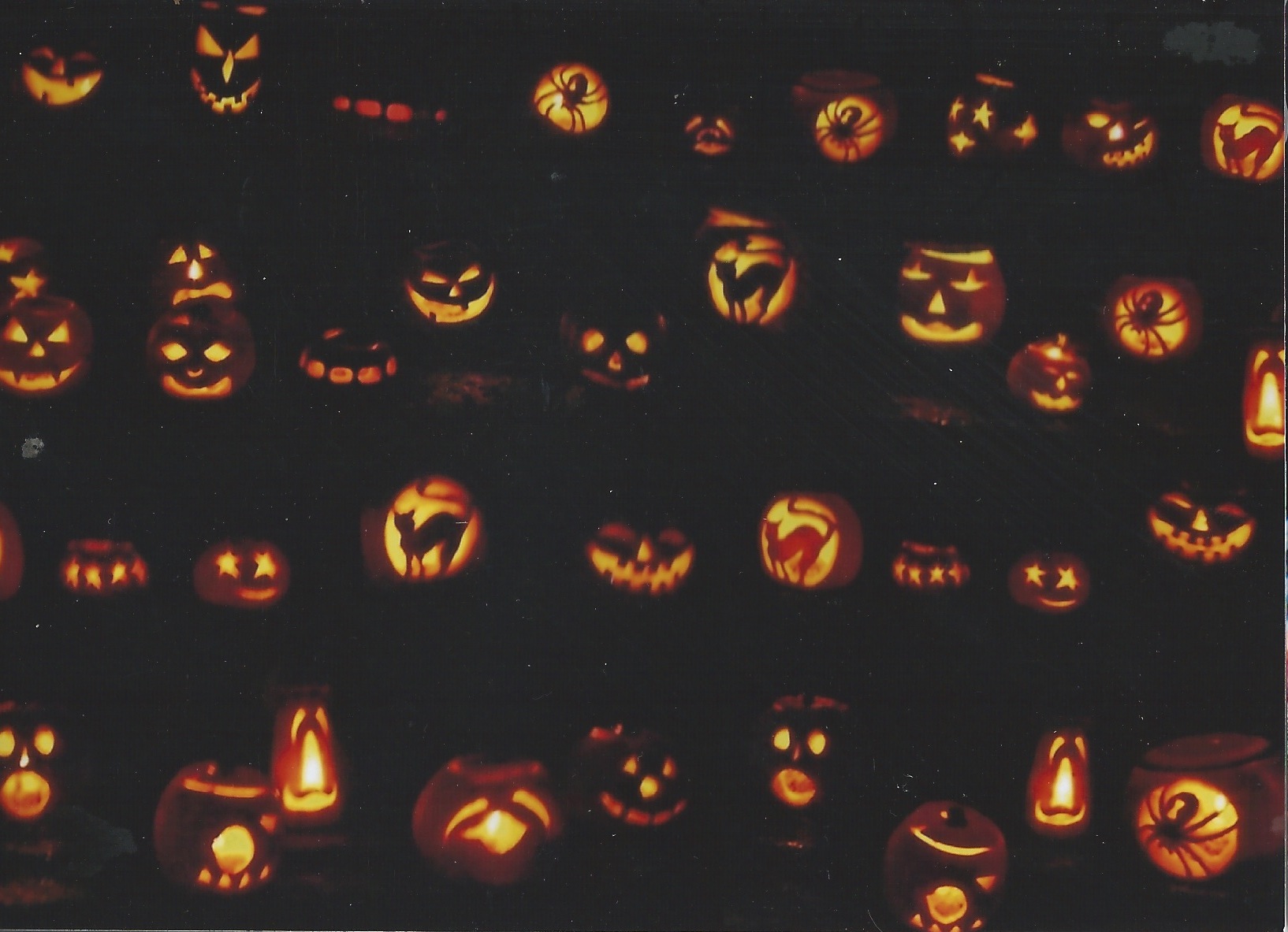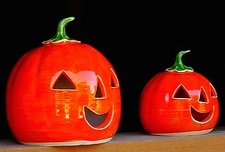Come and join us on Halloween, Thursday 31st October 2019


About All Hallow's Eve
Samhain. All Hallows. All Hallow’s Eve. Hallow E’en. Halloween. The most magical night of the year. Exactly opposite Beltane on the wheel of the year, Halloween is Beltane’s dark twin. A night of glowing jack-o’-lanterns, bobbing for apples, tricks or treats, and dressing in costume. A night of ghost stories A night of power, when the veil that separates our world from the Otherworld is at its thinnest. A “spirit night
All Hallow’s Eve beginning at sundown. The Celts called it Samhain, which means “summer’s end”, according to their ancient twofold division of the year, when summer ran from Beltane to Samhain and winter ran from Samhain to Beltane. According to the later fourfold division of the year, Samhain is seen as “autumn’s end” and the beginning of winter. Samhain is pronounced as “sow-in” (in Ireland), or “sow-een” (in Wales), Not only is Samhain the end of autumn; it is also, more importantly, the end of the old year and the beginning of the new. Celtic New Year’s Eve, when the new year begins with the onset of the dark phase of the year, just as the new day begins at sundown. There are many representations of Celtic Gods with two faces, and it surely must have been one of them who held sway over Samhain. Like his Roman counterpart Janus, he would straddle the threshold, one face turned toward the past, in commemoration of those who died during the last year, and one face gazing hopefully toward the future, mystic eyes attempting to pierce the veil and divine what the coming year holds. These two themes, celebrating the dead and divining the future, are inexorably intertwined in Samhain, as they are likely to be in any New Year’s celebration.
As a feast of the dead, this was the one night when the dead could, if they wished, return to the land of the living, to celebrate with their family, tribe, or clan. And so the great burial mounds of Ireland (sidhe mounds) were opened up, with lighted torches lining the walls, so the dead could find their way. Extra places were set at the table and food set out for any who had died that year. And there are many stories that tell of Irish heroes making raids on the Underworld while the gates of faery stood open, though all must return to their appointed places by cockcrow.
As a feast of divination, this was the night par excellence for peering into the future. The reason for this has to do with the Celtic view of time. In a culture that uses a linear concept of time, like our modern one, New Year’s Eve is simply a milestone on a very long road that stretches in a straight line from birth to death. Thus, the New Year’s festival is a part of time. The ancient Celtic view of time, however, is cyclical. And in this framework, New Year’s Eve represents a point outside of time, when the natural order of the universe dissolves back into primordial chaos, preparatory to reestablishing itself in a new order. Thus, Samhain is a night that exists outside of time and, hence, it may be used to view any other point in time. At no other holiday is a tarot card reading, crystal reading, or tealeaf reading so likely to succeed. Souls.
There are so many types of divination that are traditional to Hallowstide, it is possible to mention only a few. Girls were told to place hazelnuts along the front of the firegrate, each one to symbolize one of her suitors. She could then divine her future husband by chanting, “If you love me, pop and fly; if you hate me, burn and die.” Several methods used the apple, that most popular of Halloween fruits. You should slice an apple through the equator (to reveal the five-pointed star within) and then eat it by candlelight before a mirror. Your future spouse will then appear over your shoulder. Or, peel an apple, making sure the peeling comes off in one long strand, reciting, “I pare this apple round and round again; / My sweetheart’s name to flourish on the plain: / I fling the unbroken paring o’er my head, / My sweetheart’s letter on the ground to read.” Or, you might set a snail to crawl through the ashes of your hearth. The considerate little creature will then spell out the initial letter as it moves.
Bobbing for apples may well represent the remnants of a Pagan “baptism” rite called a seining, according to some writers. The water-filled tub is a latter-day Cauldron of Regeneration, into which the novice’s head is immersed. The fact that the participant in this folk game was usually blindfolded with hands tied behind the back also puts one in mind of a traditional Craft initiation ceremony.
Yuletide wassailing. In fact, the custom known as caroling, now connected exclusively with Midwinter, was once practiced at all the major holidays. Finally, in Scotland at least, the tradition of dressing in costume consisted almost exclusively of cross-dressing (i.e., men dressing as women, and women as men). It seems as though ancient societies provided an opportunity for people to “try on” the role of the opposite gender for one night of the year. (Although in Scotland, this is admittedly less dramatic—but more confusing—since men were in the habit of wearing skirtlike kilts anyway. Oh well...)
To Witches, Halloween is one of the four High Holidays, or Greater Sabbats, or cross-quarter days. Because it is the most important holiday of the year, it is sometimes called “The Great Sabbat”. It is an ironic fact that the newer, self-created covens tend to use the older name of the holiday, Samhain, which they have discovered through modern research. While the older hereditary and traditional covens often use the newer name, Halloween, which has been handed down through oral tradition within their coven. (This often holds true for the names of the other holidays, as well. One may often get an indication of a coven’s antiquity by noting what names it uses for the holidays.)
cross-quarter day, or Old Halloween, or Halloween O.S. (Old Style). This occurs when the sun has reached fifteen degrees Scorpio, an astrological “power point” symbolized by the Eagle. The celebration would begin at sunset. also appropriated as the holiday of Martinmas.
